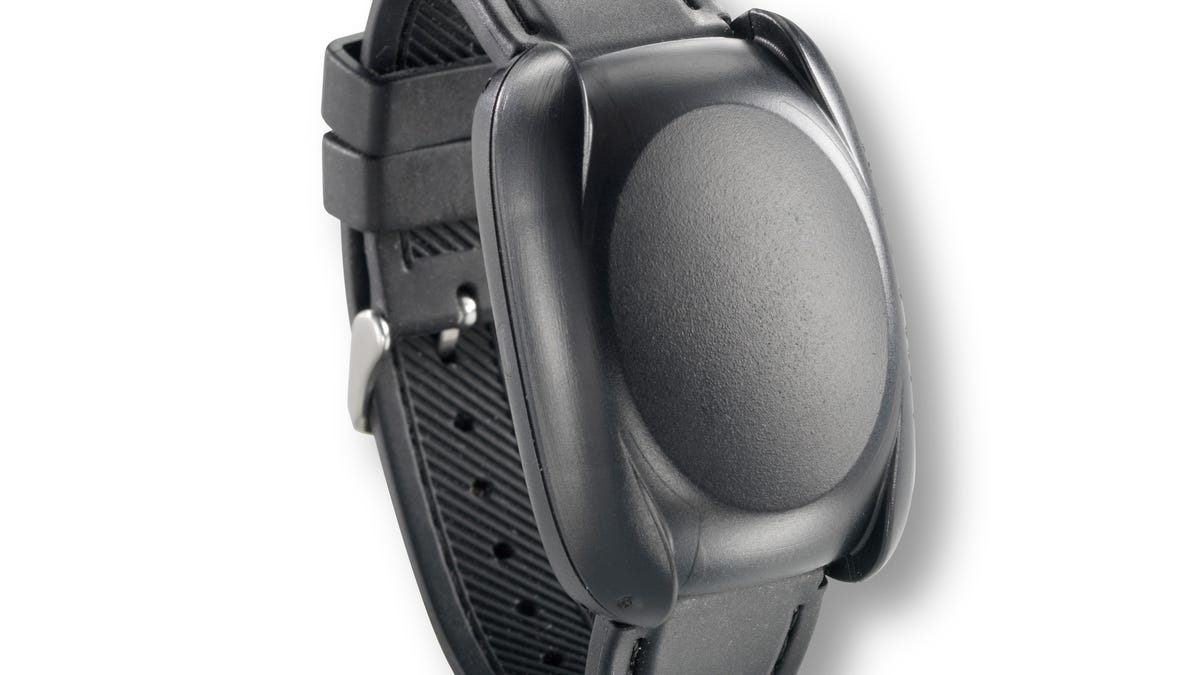A new way to track Alzheimer's patients--or your kids
The plain black wristband EmSeeQ, released this week, uses cellular location tech to help law enforcement and emergency responders more quickly track "wanderers."

We all know our cell phones can give away our locations whether or not we want them to. But what if you want to track someone who's too forgetful--or perhaps ornery--to carry one around?
EmFinders to the rescue. This week the Frisco, Texas-based tech start-up unveiled EmSeeQ, which is designed to look and be worn like a watch (though strangely does not tell time--but hey, it's better than a collar) and uses cellular network-based U-TDOA technology to provide tracking information to law enforcement and E-911 systems.
The company says the device, which costs $185 plus a $25 monthly service charge, "can be worn by anyone with the propensity to wander, including those with Alzheimer's, autism, and other cognitive and developmental disabilities." Which to any discerning parent translates to teenagers, and while we're at it, pets, all of whom have propensities to wander.
Whether kids or pets would have any success getting away with wearing this beguilingly plain black "I am either Batman or a special agent" wristband that doesn't tell time remains to be seen.
Of course law enforcement in Frisco, a fast-growing suburb of Dallas, is all for it, and understandably so. "Locating wandering individuals in a particular area can often be like searching for a needle in a haystack," says Frisco Police Chief Todd Renshaw. "If the wanderer has driven somewhere, that becomes multiple haystacks. It's encouraging to know that we can begin receiving support from EmFinders immediately without any extra effort on our part. I would advise all law enforcement agencies to become familiar with this service."
U-TDOA (Uplink Time Difference of Arrival) is network-based location technology already used by 911 personnel across the country to determine the location of cell phone subscribers placing emergency calls. EmFinders says that, unlike GPS and other location technologies, EmSeeQ is able to locate those behind walls, roofs, buildings, etc. (aka anyone indoors), regardless of how far they have strayed from home.
"Time, distance, and physical barriers are consistently daunting variables in wandering scenarios," says Jim Nalley, CEO and co-founder of EmFinders, which does have its competition. "As the population of at-risk individuals continues to grow, so does the need for support to caregivers and law enforcement."
Alzheimer's disease is newly diagnosed almost every minute, according to the Alzheimer's Association, with some 5.3 million Americans living with the disease today, while autism affects some 1.5 million Americans and grows at least 10 percent annually. About 70 percent of people with dementia are likely to wander, according to the association, and 92 percent of children with autism are prone to wandering, according to an online survey conducted by the National Autism Association.
EmFinders did not provide figures on how many spouses and parents have expressed interest in strapping these wristbands to those who wander but are not lost.

